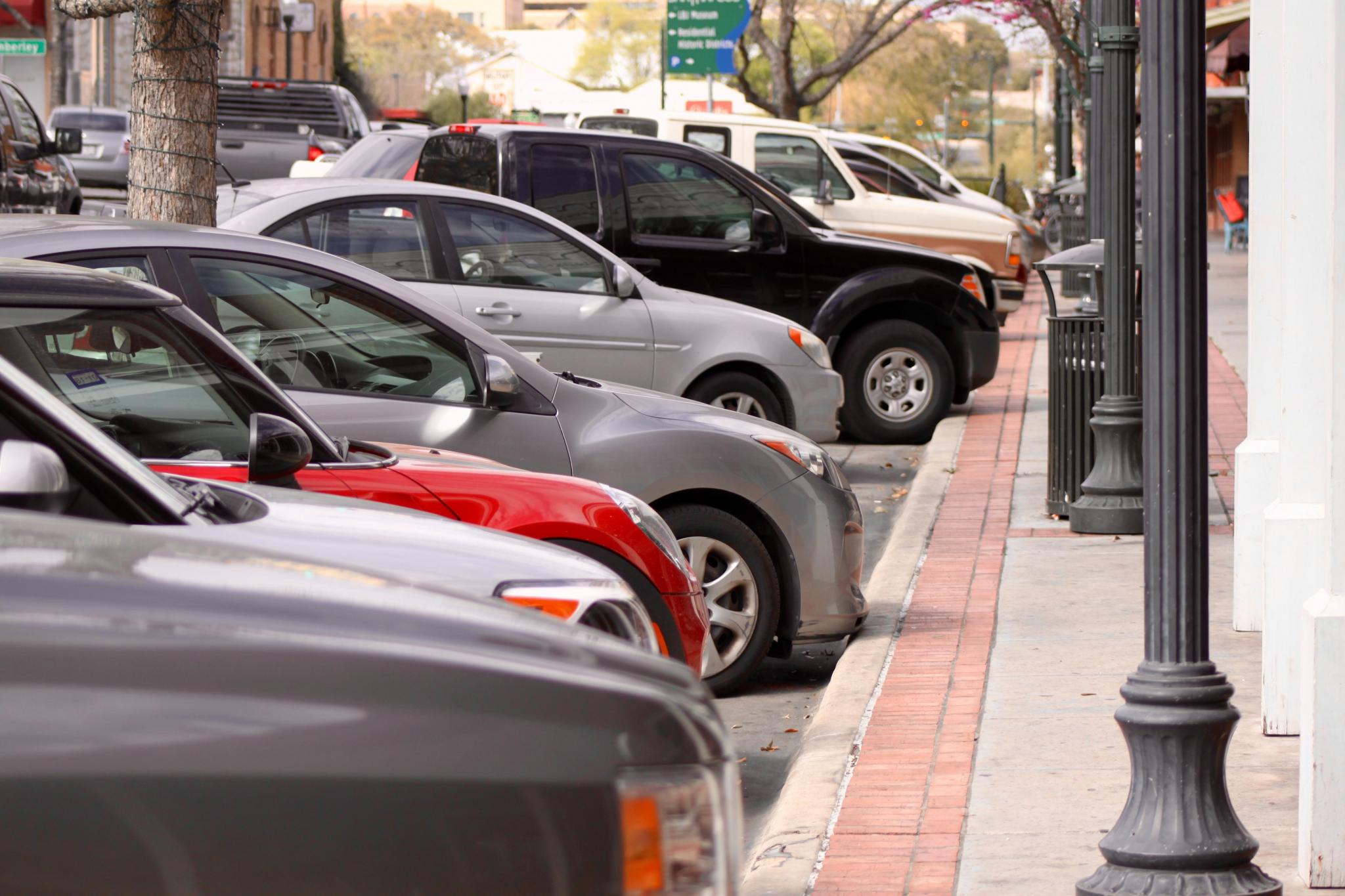
Paid parking raises its head in new plan
Paid parking is likely to make a return to downtown San Marcos, but it wouldn’t be an immediate change, according to city staff.
At its meeting Tuesday night, the council approved a Parking Program Framework Plan for the development of a parking management plan for the downtown area. The plan, according to city staff, “is intended to be a guide for decision makers on topics such as governance, customer service, planning, technology, enforcement, as well as parking facility and systems management.” The Downtown Association has expressed its support for the plan.
“Is this about paid parking?” council member Jane Hughson asked at the start of council’s discussion. “Because it’s not in the agenda that paid parking is under consideration.”
Hughson said that if paid parking is part of the issue, it should be included in the agenda item’s wording so the public knows about it.
“When people are looking at the agenda to see if there’s something they’re interested in, this does not say that we are considering people having to pay for parking,” Hughson said. “And this is probably the fourth time I’ve mentioned it.”
“I’ve had people very sarcastically say to me that any time you see the phrase ‘parking management,’ it’s a facade for on-street paid parking,” council member Ed Mihalkanin said, “and it seems like it is true.”
The 11-point plan does indeed include paid on-street parking as one of the approaches to parking management downtown. One of the points is to create “Parking Benefit Districts,” where a percentage of net on-street meter revenue will go back to the districts where the funds were generated. Another involves investing in new on-street and off-street parking technology, including new on-street parking meters.
In a response to questions from the Daily Record about downtown employee parking, Economic Development and Downtown Administrator Kevin Burke said the plan framework is intended as a guide. “Over time, it will be modified as necessary to achieve organizational objectives. It is not a set of tasks to which the council is committing, or directing staff to undertake. As such, the framework does not include any specific measures to address employee parking.”
He also said that implementing on-street paid parking is the city’s primary focus in addressing employee parking.
“Our immediate next step is to complete the License Plate Recognition data collection and analysis, incorporate those results into the On-Street Paid Parking Implementation Plan, and present that plan to council in late-summer or fall,” he said.
Another point in the plan is to improve the use and turnover of on-street parking spaces and “reduce employee and student abuse of these spaces through the implementation of paid on-street parking.” At the same time, the plan guides the city toward finding opportunities for off-street parking — parking lots or “surface parking resources.”
In the council’s discussion of the parking management framework, City Manager Bert Lumbreras said that creating off-street parking involves investments in resources and their upkeep, but there are opportunities for the city to work with the private sector and explore surface parking options.
“It would not be prudent on our part to not look at those partnership opportunities first before we start embarking on some very expensive options,” he said.
Council member Melissa Derrick asked Burke about partnership options with Texas State University. Burke said the university does have some parking structures with spaces set aside for public parking, but has not been willing to rent out blocks of those spaces for the medium term or longer.
Mayor John Thomaides called the plan “one of the latest steps in a multi, multi-year conversation” and said he wants to continue the momentum toward solving the perennial problem of downtown parking.
“I mean, look — for the very first time, we had downtown businesses, in writing, saying, ‘Please implement the parking management district. It will give me more parking spaces for my customers.’”
Council member Lisa Prewitt said the main outstanding issue is employee parking downtown. She said that business owners had approached council and asked that enforcement of the parking time limits be increased before the city moved to paid on-street parking.
“Now that we’ve done that, they’ve found out and we’ve found out it might not be as advantageous as we thought,” she said.
With more tickets going out to downtown business owners and patrons, support is likely building for paid on-street parking, Prewitt said, adding that something should change “so we don’t have downtown business owners with $200 and $500 in tickets lined up because they’re trying to park downtown.”
Hughson asked about funds for equipment, like meters or kiosks, that would be needed to implement paid parking.
Lumbreras said that with the parking plan likely to undergo modifications, “The timing of it is such that we would not be able to implement all of that or get it going by the start of the fiscal year,” and that city staff would return to council with a budget amendment.
Burke emphasized that the plan is a “working document” subject to changes.
“We don’t want it to be frozen for all time,” he said.











